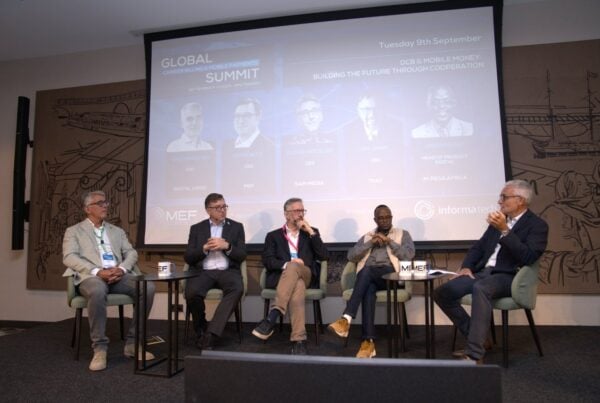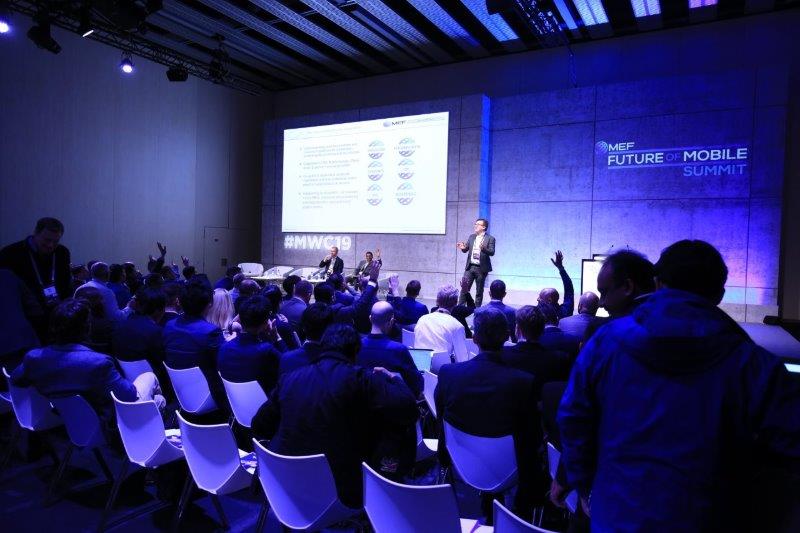With over 55% of adults now using mobile money and digital content consumption accelerating, Sub-Saharan Africa is at the forefront of a mobile-first revolution. From 5G rollouts and booming local content production to new monetization strategies like direct carrier billing, the region is shaping the future of digital engagement. MEF CEO Dario Betti takes a look at the trends driving this transformation.
Sub-Saharan Africa is experiencing a digital revolution, with mobile technology at its core. The region’s mobile industry is a major economic driver, and mobile payments are pivotal in this transformation.

Recent data from the World Bank highlights that over 55% of adults in Sub-Saharan Africa now use mobile money accounts, a figure that has more than doubled in the past decade. In 2024, Africa processed 65% of global mobile money transaction value, amounting to$1.1 trillion, and handled nearly 82 billion of the 108 billion global transactions. In Sub-Saharan Africa alone, mobile money added $190 billion to GDP in 2023* (Ecofin Agency). The sector’s contribution to the region’s GDP is significant, with industry estimates placing its value at over$140 billion in 2023, and projections indicating continued robust growth through 2030.
To explore these opportunities and more, industry leaders and innovators gathered at the Mobile Ecosystem Forum’s MEF Connects Content & Payments event in Nairobi in April 2025.
The rise of 5G and its impact on mobile content consumption
One of the key drivers of future mobile content consumption in Sub-Saharan Africa is the rollout of 5G. As mobile broadband speeds improve, content services such as streaming and mobile gaming are set to benefit from enhanced quality and accessibility. South Africa has already surpassed 2 million 5G connections, and Kenya and Nigeria are rapidly expanding their 5G infrastructure. Industry analysts predict that 5G will unlock billions in economic value by enabling new digital services and applications.
Significant investments are being made in digital infrastructure. For example, Safaricom Ethiopia invested $1.5 billion in network expansion in 2023, supporting both mobile payments and content delivery. The International Finance Corporation (IFC), in partnership with the African Development Bank and Nigeria’s EbonyLife, is also assessing a new investment fund to grow the African film industry, which will further boost local content production and digital distribution.
DCB has proven to be an efficient way for telecom providers and content platforms to reach wider audiences. It provides a seamless and secure way for users to access digital content without the need for credit cards or bank accounts. This payment method is especially important in the context of mobile gaming and streaming, where instant access to content is a key component of user engagement.”
The growth of local content creation and production
Sub-Saharan Africa’s mobile content landscape is also evolving due to a dramatic rise in locally produced content. This trend has been fuelled by increasing demand for African stories and narratives that resonate with local audiences. Local content providers have been collaborating with international studios to produce region-specific films, series, and documentaries, creating unique opportunities for African talent and resources.
According to Quartz, streaming platforms like Netflix and Showmax have collectively invested tens of millions of dollars in African productions, with Showmax reporting that over 40% of its catalogue is now African-made. The Nigerian film industry (Nollywood) employs over 1 million people and contributes about$7 billion annually to Nigeria’s GDP, with much of this growth now driven by digital and mobile distribution.
Monetization strategies in streaming services
With the growing demand for streaming services, companies are exploring diverse monetization strategies to ensure profitability and market penetration. Traditional subscription-based models, such as Netflix’s monthly fee, have found success in wealthier markets, but in Sub-Saharan Africa, where affordability can be a barrier, services are diversifying their approaches.
Showmax, for example, offers both monthly and daily payment options, allowing users to pay for content only when they use it. This flexible model has led to a 30% increase in daily active users, according to company reports. The adoption of mobile money and direct carrier billing (DCB) has enabled service providers to reach broader audiences, particularly those without access to traditional banking services. DCB is now available to over 300 million mobile users in the region, making it a critical enabler for digital content monetization.
As content providers look to grow their revenue streams, the integration of ads within streaming platforms is also gaining traction. Advertising-supported video on demand (AVOD) services are becoming increasingly popular, particularly in countries where users may not be able to afford subscription models. Platforms like YouTube and Facebook are leading the charge in advertising-driven content consumption, and in the African market, these models are expected to expand rapidly as mobile internet access improves. YouTube’s African user base grew by 25% in 2024, and local creators are now earning significant ad revenue, with some top channels generating over$100,000 annually.
Regulatory and compliance factors shaping the industry
The rapid growth of mobile content and digital payments in Sub-Saharan Africa is accompanied by the need for regulation and compliance. Governments across the region are working to create frameworks that safeguard both consumers and businesses. The introduction of data protection laws, such as the Protection of Personal Information Act (POPIA) in South Africa, has raised the bar for privacy and security in digital transactions, including mobile payments and content consumption.
Mobile payments and content platforms must adhere to these data privacy laws, ensuring that consumer information is protected. In addition, there are ongoing discussions around the regulation of mobile content, especially concerning issues like online piracy, content censorship, and intellectual property rights. These regulations not only help to safeguard consumers but also create an environment that encourages more investment from global players by establishing clear and enforceable guidelines for operating in the region.
The regulatory environment is also crucial in ensuring that mobile money and direct carrier billing (DCB) systems operate securely and efficiently. In 2024, regulatory reforms in Kenya and Ghana led to a 15% reduction in mobile payment fraud cases, building greater trust in digital financial services (Ecofin Agency). New payment licenses and market entries, such as Flutterwave’s expansion into Francophone Africa, are driving competition and innovation in the payments space.
Emerging markets and opportunities
While the focus on mobile content and streaming has largely been centred around well-established markets like Nigeria, South Africa, and Kenya, there are emerging markets across the continent that are ripe for investment. Smaller countries like Ghana, Tanzania, and Ethiopia, with expanding mobile user bases and improving internet access, present significant opportunities for content providers and telecom companies.
Ethiopia, for example, now has over 60 million mobile subscribers and a mobile penetration rate of 50%. In 2023, Safaricom Ethiopia invested$1.5 billion in network expansion, and several local startups have raised over$100 million collectively to develop mobile-first content and payment solutions (Ecofin Agency).
Integration of payment methods and the role of Direct Carrier Billing
The integration of mobile payments, particularly direct carrier billing (DCB), has been a game-changer in mobile content consumption across Sub-Saharan Africa. DCB allows users to make purchases for digital content or services by charging it directly to their mobile phone bills. This method is particularly advantageous in regions where bank penetration is low and many consumers are unbanked.
DCB has proven to be an efficient way for telecom providers and content platforms to reach wider audiences. It provides a seamless and secure way for users to access digital content without the need for credit cards or bank accounts. This payment method is especially important in the context of mobile gaming and streaming, where instant access to content is a key component of user engagement.
Moreover, mobile money services like M-Pesa in Kenya have further fuelled the adoption of DCB, allowing users to easily pay for content via mobile wallets. M-Pesa processed over 21 billion transactions in 2023, with a total value exceeding$300 billion. Mobile money services are now available to over 1.1 billion registered accounts in Africa, representing 53% of the world total—a 19% rise from 2023 (Ecofin Agency).
Conclusion
Sub-Saharan Africa’s mobile landscape is evolving rapidly, driven by the growing demand for mobile streaming, gaming, and innovative payment solutions. The rise of 5G networks, the increase in local content production, and the adoption of flexible monetization strategies are all contributing to the rapid growth of the digital entertainment sector. The integration of mobile payments like DCB and mobile money is helping to bridge the gap between mobile users and digital content, opening up new opportunities for both consumers and industry stakeholders.
As the region continues to embrace digital technology, events like MEF Connects Content & Payments play a vital role in shaping the future of mobile technology in Sub-Saharan Africa.





